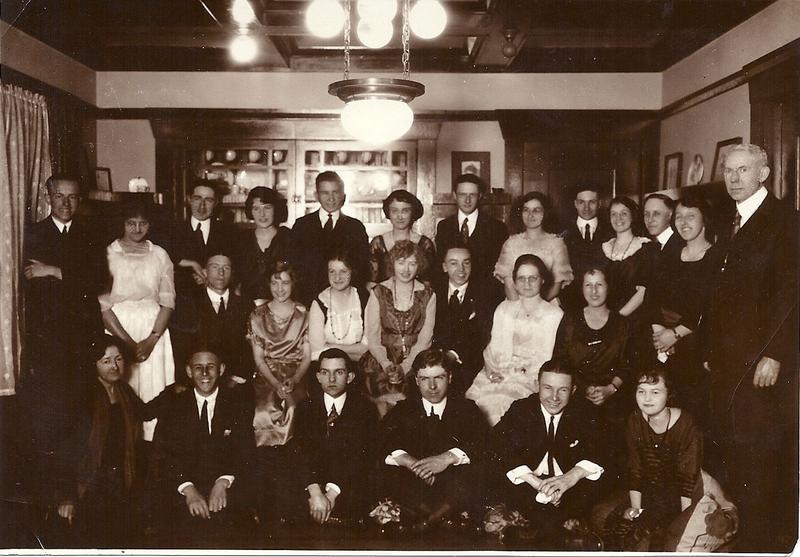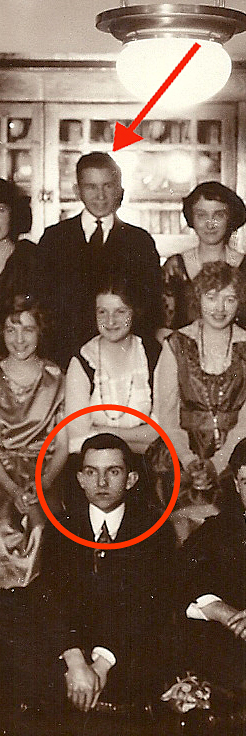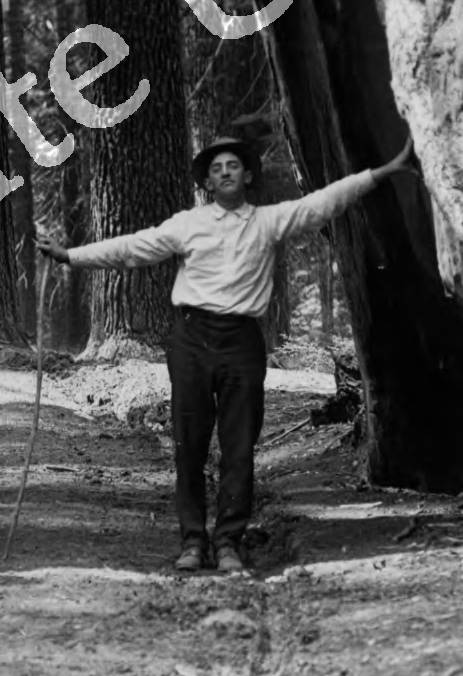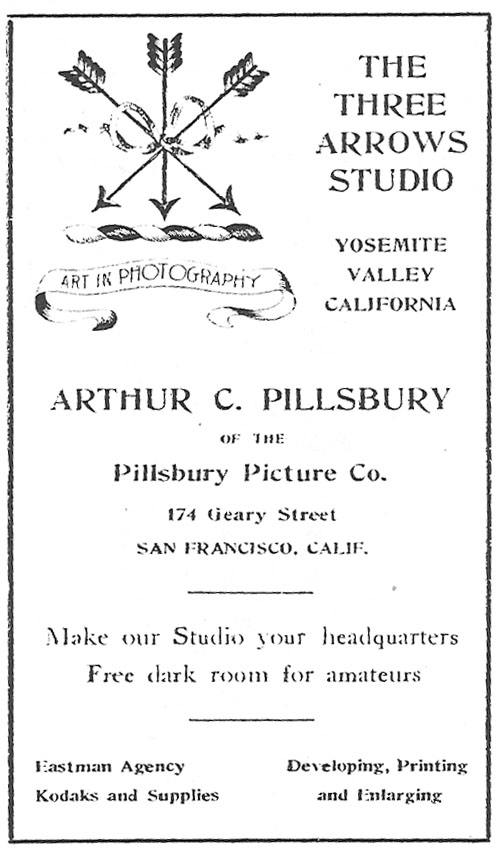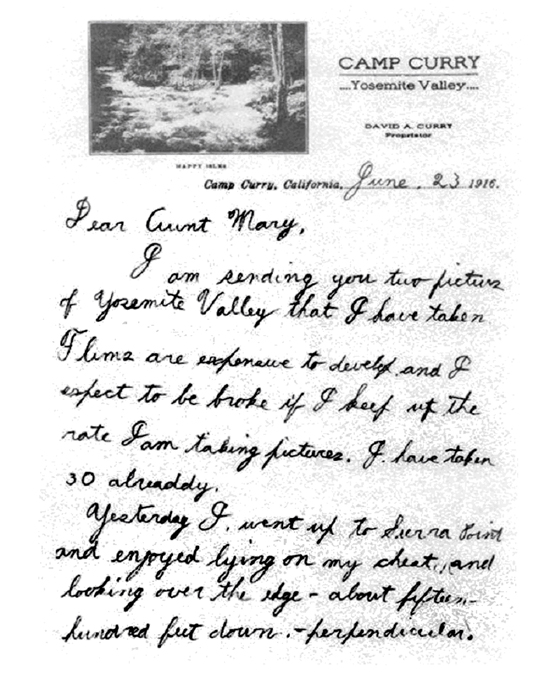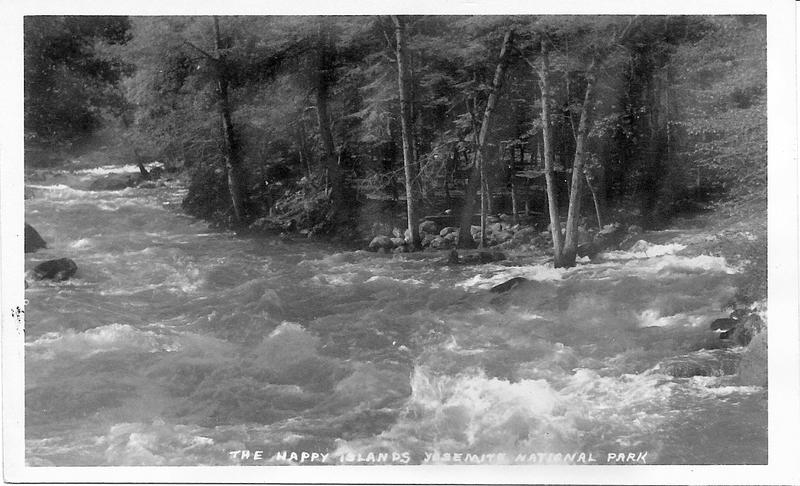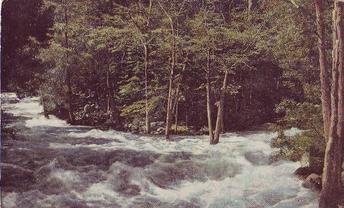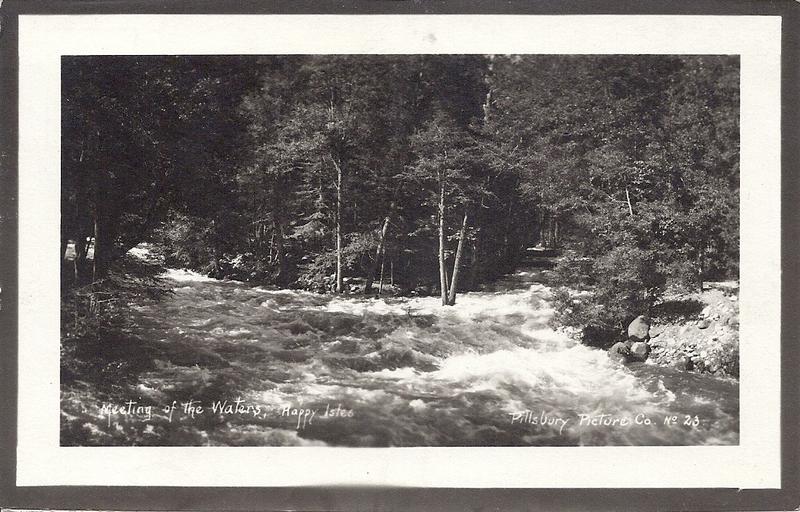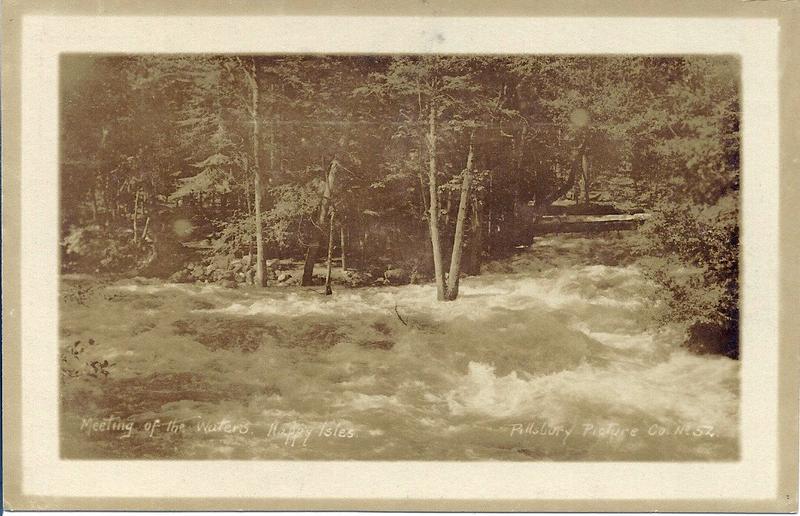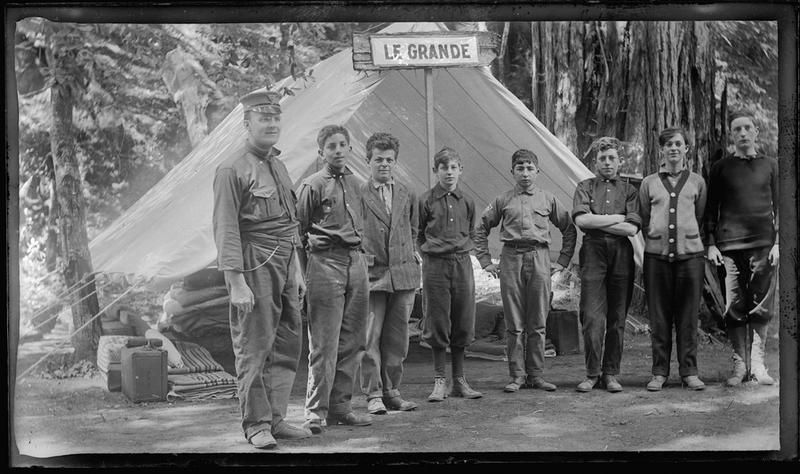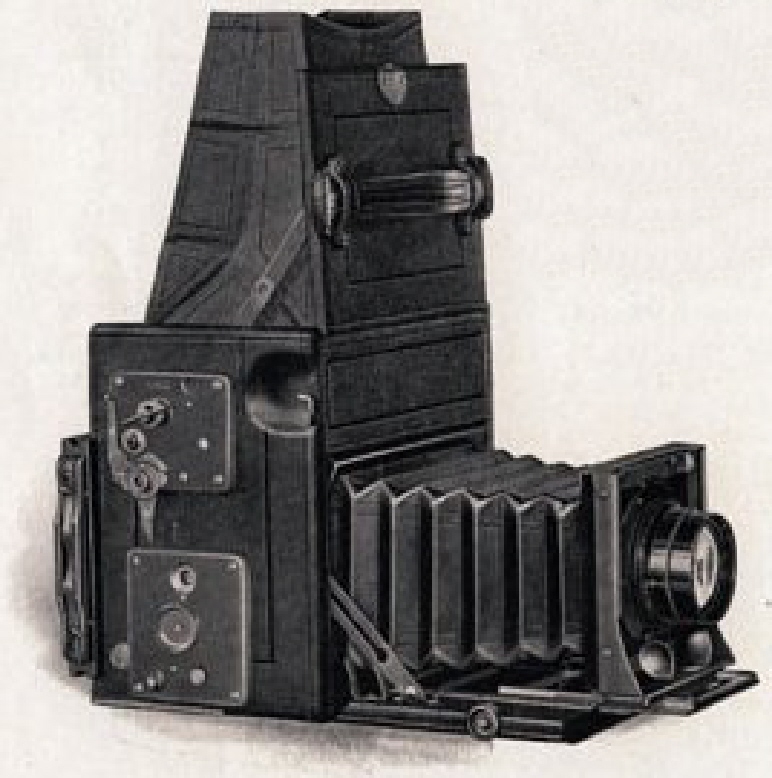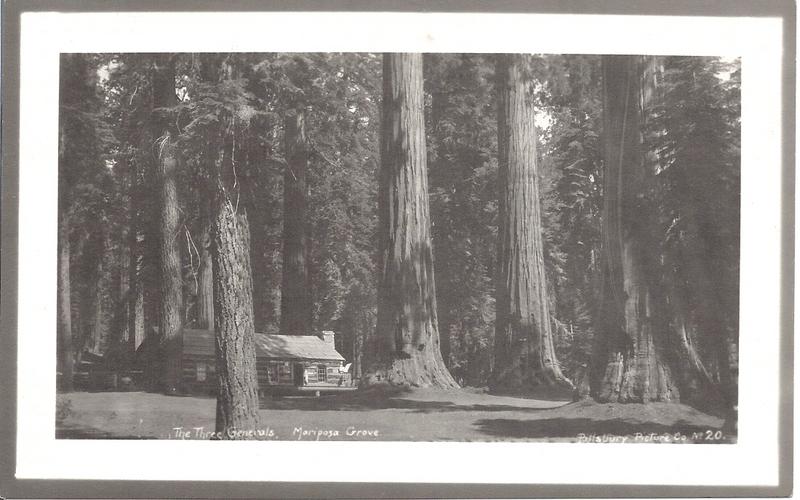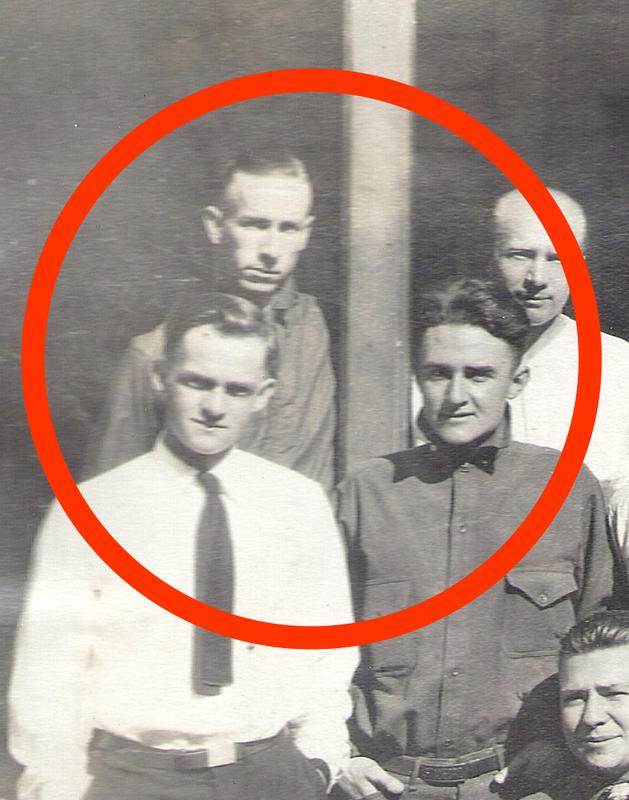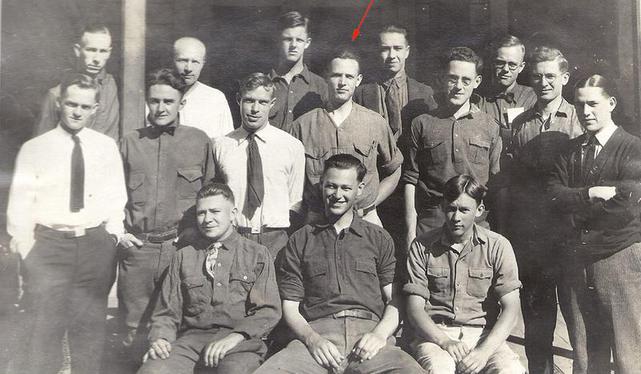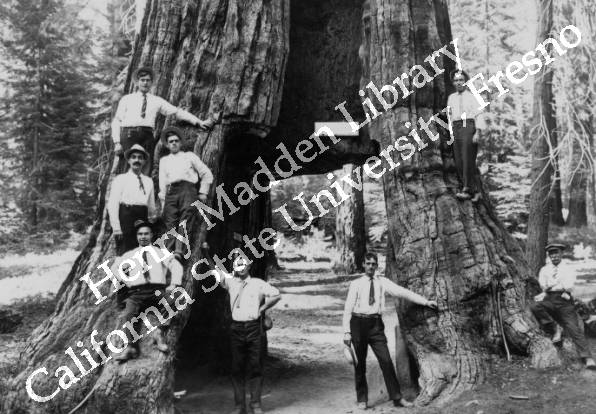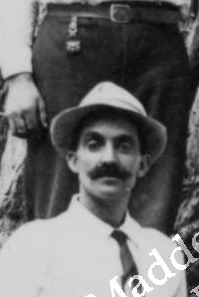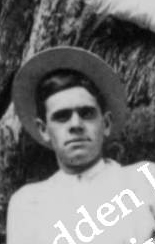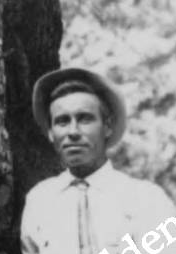We're committed to helping you
Ansel Adams & A. C. Pillsbury - Discovered Insights
(See Arrow)
Arthur Francis Pillsbury, the youngest son of Arthur C. Pillsbury. Trained in photography, Dr. Pillsbury used his skills as a photographer and surveyor, learned from his father, professionally while designing projects for the Civilian Conservation Corp., illustrating academic papers during his career, first teaching and then as the Director of the Water Resources System for the University of California, as well as personally.
His older brother, Ernest Sargent Pillsbury, was a professional photographer for the police department in Los Angeles and in the film industry after serving in WWI.
(Circled) Ansel Adams, around 1920.
(See below) Adams, circa early 20s, from the Harry Pidgeon Collection. The photo, in which Pidgeon appears, we know had been likely mis-attributed as a later attempt at covering up the ongoing attempt to eliminate AC Pillsbury from Yosemite. (At the Cutout No. 1) More photos with Adams appear further down the page.
In this autobiography Adams states he and his mother and father left San Francisco on June 1st, spent the night at the Hotel Del Portal in El Portal, and the next day took the open bus into the Valley, staying at Camp Curry in tent No. 305. A short time later his parents gave him his first camera, a Kodak Box Brownie. His first roll of film, Adams reports, was developed personally by Arthur C. Pillsbury.
The photo images below, both of Happy Isles, one for Pillsbury Studio as a post card and the other on the Right for the use of Detroit Publishing. The two below, taken from the same spot, are Pillsbury photos taken before 1906. Tinting a photo for publication can changes its appearance to some extent.
Pillsbury, for his own use, this is a post card with a Pillsbury BACK, Possible Pillsbury, Detroit Publishing, as a post card.
Pillsbury postcard, Meeting of the Waters, Happy Isles, No. 23 Pillsbury Postcard, Meeting of the Waters, Happy Isles, No. 52
Photographers in Yosemite made a practice of photographing tourists at several different spots in the Valley because Park policy mandated this as a desirable service. Pillsbury also photographed guests around the Park elsewhere, including at Camp Curry. He would invite them to come to the studio later in the day to view the proofs and see the nature movies shown there.
The glass plate negative for the photo below was purchased from the estate of Mildred Clemens, an old friend of Arthur C. Pillsbury, who had in her possession a large number of glass-plate negatives and lantern slides in the collection.
The photo on the left shows Ansel Adams in Yosemite, 1916. He seems to be participating in a summer camp day activity with other young boys.
Although a thorough research was carried out of the several sources available we could not find a mention of programs for 'city slicker' kids. However, the Currys were always trying things out to see if there would be a demand and so make Curry a more attractive destination. 1916 was particularly busy because the Currys were forced to compete with the Desmond Company, subsidized by Stephen T. Mather and his associates. For more read Chapter 17 COLLAPSE, from "Creating the National Park Service, The Missing Years" by Horace M. Albright and Marian Albright Schenck.
Mildred Clemens' collection included a large number of glass-plate negatives taken by Pillsbury of herself and others. The size of Pillsbury's glass-plates depended on the use for which the image was intended. Those destined to become post cards were produced either on a Compact Graflex, 5" x 7" or an adaption Pillsbury designed himself, or a smaller 5 1/2" x3 1/4" Compact Graflex. These were all part of the Graflex SLR cameras and were specially favored by journalists for easy viewing of the subject and did not require a tripod. This exactly matches the format of the early brown-bordered Pillsbury post cards.
The Three Generals, Mariposa Grove, Pillsbury Picture Co. No. 20
Class Photos
Pillsbury's Photographic Workshops
The photo on the immediate left is from a larger photo, circling three young men, one of whom appears to be Ansel Adams, standing by the post.
The young man in the last row appears to be Earl Brooks. Either of the two young men below, within the circle, could be a slightly older Ansel Adams than seen in the Reunion photo at the beginning of this page. The other young man could be a cousin.
Full sized photo, arrow pointing to Harry Pidgeon.
Class photos are taken in schools, for workshops, for summer camps, you name it They are usual for people of all ages. Below is a photo which is archived in the Harry Pidgeon Collection in Fresno, CA. Ansel Adams is listed as appearing in the photo as A. Adams. We believe it was taken by Arthur C. Pillsbury as a 'class picture.'
Title  California Tree
California Tree
Photographer  Pidgeon, Harry
Pidgeon, Harry
Physical description  13 cm. x 18 cm.
13 cm. x 18 cm.
Notes  California Tree. On back of print: James Johnston, Inos Whit, Jas. Donald, A. Adams, James Hannah, Alex Brydson.
California Tree. On back of print: James Johnston, Inos Whit, Jas. Donald, A. Adams, James Hannah, Alex Brydson.
Format  Photograph
Photograph
Item number  12d.147
12d.147
Physical collection  Harry Pidgeon collection
Harry Pidgeon collection
Note: There are eight men in the photo but only six names appear in the notes. Harry Pidgeon and Earl Brooks are not among these.
If Harry Pidgeon did not take the photo but appears in it as a 'class picture' this would be the case. According to Leroy Radanovich, a photographic expert in Yosemite, this appearing in the Bay Citizen article, dated November 9th, that "Harry Pidgeon, a known Yosemite photographer who traveled with Brooks." If Earl Brooks was a close friend Pidgeon would likely not write his name. The names written would be those he did not know
A. Adams, identified in this photo from the Harry Pidgeon Collection, (See archival notes above.)
Questions about where Ansel Adams, Harry Pidgeon, and Earl Brooks received their training in photography have been broached during the course of this discourse. Theories have been thick upon the ground but proof scarce as hen's teeth.
Pillsbury was a highly successful photographer who, unlike any other Yosemite photographer, had studios in other places around California, including San Francisco and San Diego. Like so many other top photographers, he gave regular workshops for those interested in photography.
Attendance at these trainings was heavy both because of the excellence of Pillsbury's work and because the sessions took place in one of the most popular resort areas in California, Yosemite. Students could either stay at Camp Curry of at the Studio of the Three Arrows, where tents were available. Some students worked for Pillsbury in an apprenticeship relationship, before, afterward or both.
Theory: Each of these men took workshops from Arthur C. Pillsbury, at least one of these at the same time. (More on this on Page Two, coming next week)
Each can be placed in Yosemite during the time Pillsbury was providing workshops in photography. Two of the men were friends, making it more likely they would arrange to take such a workshop together. Therefore it is likely this is their group photo, taken upon completing of the workshop.
The photography is strikingly like those taken by Pillsbury, who routinely photographed groups of people as part of his work.
No other explanation has been found for the expertise each man possessed in photography. This also explains the prints Brooks gave to relatives. Charlotte is exploring the theory that the Brooks prints and Norsigian negatives are flawed in some ways. For example, the Jeffrey Pine photos, both the Norsigian and Brooks, have sun flares. The Pillsbury published version has no such flaws and the presentation is far more dramatic. We believe the Norsigian and Brooks negatives were never used because they were not up to the standard to which Pillsbury adhered, explaining why no published prints exist.
These flawed, rejected or discarded negatives could have been printed by students as a challenge during the workshop. Pillsbury might even had offered a prize for the best rescue. Charlotte is compiling the comparisons so these issues are more accessible.
Ansel Adams - Into Plain Sight
Presented by Melinda Pillsbury-Foster and Charlotte Kieltyka
The photo below, taken at the home of Arthur C. Pillsbury in Oakland, California around 1918-20, is from my Aunt Grace's album. She predeceased my father, Dr. Arthur F. Pillsbury, by several years, dying August 12, 1979. Aunt Grace, like others at the Studio of the Three Arrows, usually did not bother to take her own photos. It was easier to print those she wanted out of the thousands stored there for use in a system which was both numeric and descriptive. Family photos in the archive were supposed to have the identifying number stamped on the back, when printed.
The archive in Yosemite included family photos of the kids growing up there and photos from the workshops which Pillsbury was putting on from the time his son, my father, Arthur F. Pillsbury, was around 12 - 14. This photo would have been at the Pillsbury lab facility, a smaller collection as well as in Grace's album. There is no number on the reverse but Grace signed her name. In this shot Arthur F. is around 16.
Ansel Adams appears in the photo below. He also appears in photos from photographic workshops given by Arthur C. Pillsbury from the period.
These pages place Ansel Adams through family photos, photos available through the Harry Pidgeon Collection located in Fresno, California, and images from the estate of Mildred Clemens during the shadowy period from 1916 - 1927 which is only lightly touched on in the Adams Autobiography, "Ansel Adams, an Autobiography," written by Ansel Adams and Mary Street Alinder, published by Little, Brown and Company, 1985, hard cover edition, paperback edition, 1996. Pillsbury is barely mentioned in the Adams autobiography, receiving not even a place in the book's index.
Did Adams know Arthur C. Pillsbury? Why yes, very well, according to this letter written by Ansel Adams in 1978.
Did Adams know Arthur C. Pillsbury?
Why yes, very well, according to this letter written by Ansel Adams in 1978.
Ansel Adams first went to Yosemite in June, 1916, according to his own report found in his autobiography, "Ansel Adams, an Autobiography."
What was Ansel Adams doing in Yosemite from 1916 - 1927?
Ansel Adams first went to Yosemite in June, 1916, according to his own report found in his autobiography, "Ansel Adams, an Autobiography," states he and his mother and father left San Francisco on June 1st, spent the night at the Hotel Del Portal in El Portal, and the next day took the open bus into the Valley, staying at Camp Curry in tent No. 305. A short time later his parents gave him his first camera, a Kodak Box Brownie. His first roll of film, Adams reports, was developed personally by Arthur C. Pillsbury.
Ansel Adams first went to Yosemite in June, 1916, according to his own report found in his autobiography, "Ansel Adams, an Autobiography."
In this autobiography Adams states he and his mother and father left San Francisco on June 1st, spent the night at the Hotel Del Portal in El Portal, and the next day took the open bus into the Valley, staying at Camp Curry in tent No. 305. A short time later his parents gave him his first camera, a Kodak Box Brownie. His first roll of film, Adams reports, was developed personally by Arthur C. Pillsbury.
Ansel Adams first went to Yosemite in June, 1916, according to his own report found in his autobiography, "Ansel Adams, an Autobiography."
In this autobiography Adams states he and his mother and father left San Francisco on June 1st, spent the night at the Hotel Del Portal in El Portal, and the next day took the open bus into the Valley, staying at Camp Curry in tent No. 305. A short time later his parents gave him his first camera, a Kodak Box Brownie. His first roll of film, Adams reports, was developed personally by Arthur C. Pillsbury.
Ansel Adams

